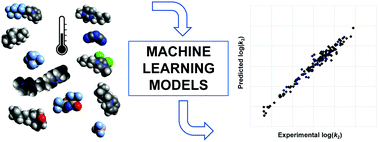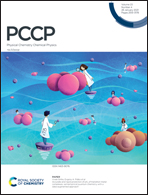Machine learning approaches to understand and predict rate constants for organic processes in mixtures containing ionic liquids†
Abstract
The ability to tailor the constituent ions in ionic liquids (ILs) is highly advantageous as it provides access to solvents with a range of physicochemical properties. However, this benefit also leads to large compositional spaces that need to be explored to optimise systems, often involving time consuming experimental work. The use of machine learning methods is an effective way to gain insight based on existing data, to develop structure–property relationships and to allow the prediction of ionic liquid properties. Here we have applied machine learning models to experimentally determined rate constants of a representative organic process (the reaction of pyridine with benzyl bromide) in IL–acetonitrile mixtures. Multiple linear regression (MLREM) and artificial neural networks (BRANNLP) were both able to model the data well. The MLREM model was able to identify the structural features on the cations and anions that had the greatest effect on the rate constant. Secondly, predictive MLREM and BRANNLP models were developed from the full initial set of rate constant data. From these models, a large number of predictions (>9000) of rate constant were made for mixtures of different ionic liquids, at different proportions of ionic liquid and molecular solvent, at different temperatures. A selection of these predictions were tested experimentally, including through the preparation of novel ionic liquids, with overall good agreement between the predicted and experimental data. This study highlights the benefits of using machine learning methods on kinetic data in ionic liquid mixtures to enable the development of rigorous structure–property relationships across multiple variables simultaneously, and to predict properties of new ILs and experimental conditions.

- This article is part of the themed collections: Non-traditional solvent effects in organic reactions and Emerging AI Approaches in Physical Chemistry


 Please wait while we load your content...
Please wait while we load your content...